
Amazing sunsets are common at The Twelve Apostles lookout
If you're looking to experience Australia's premier coastal journey and one of the most scenic drives in the world, look no further than the Great Ocean Road. Located in Port Campbell National Park in Victoria, the Great Ocean Road runs for around 243kms along an ever-changing coastline from Torquay in the east to Warrnambool in the west.
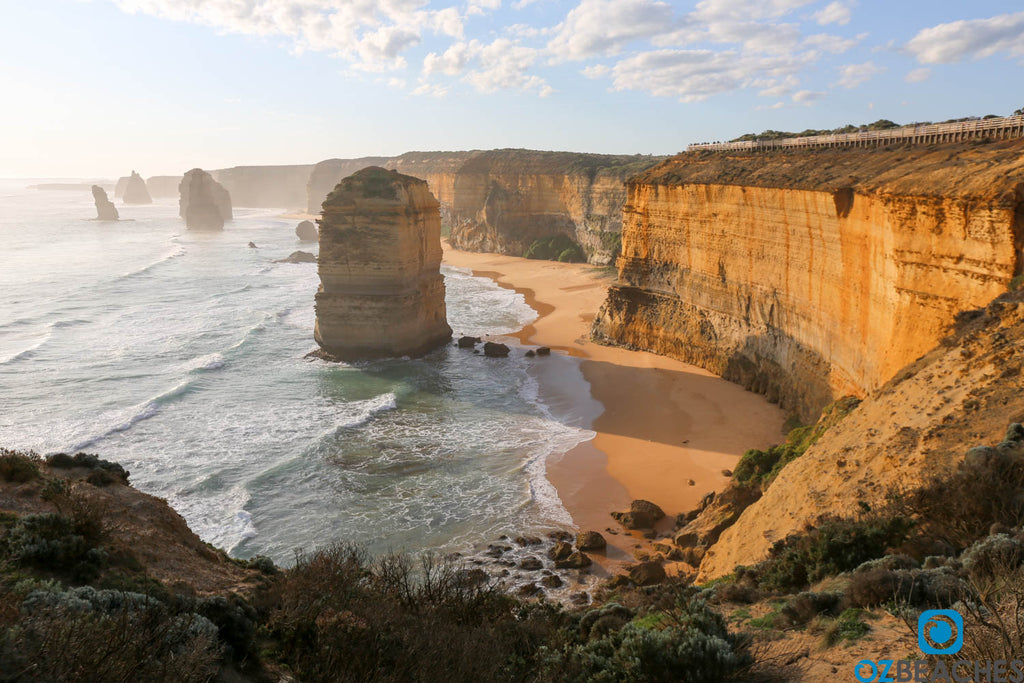
A misty day at The Twelve Apostles
The road twists and turns along the south-western Victorian coastline and serves up a amazing array of sights, sounds and stories. You'll pass through quaint fishing villages, historic towns, national parks, bustling urban centres and popular holiday regions while being surrounded by raw beauty and almost every type of flora and fauna Australia has to offer. The Great Ocean Road is a place of contrasts. majestic limestone cliffs nestle beside long, sweeping sandy beaches and you never quite know what you're going to find around the corner.
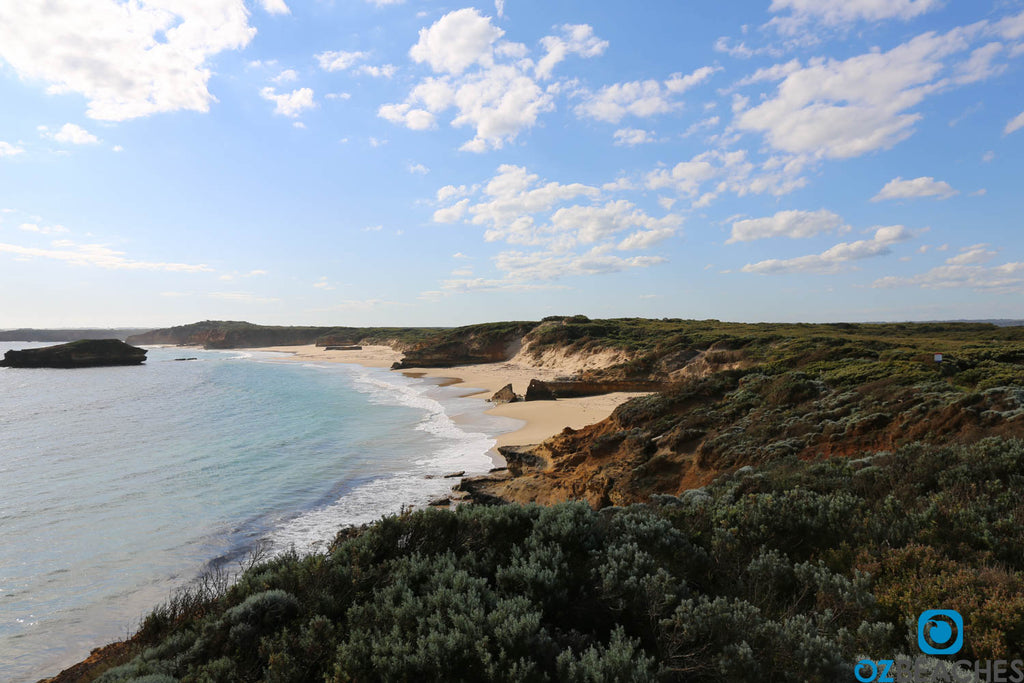
Looking west from the Bay Of Martyrs lookout
Around the time of WW1, the stretch of coastline now known as the Great Ocean Road was only accessible by boat or by rugged bush trail. There were isolated settlements dotted along the coastline and small pockets of industry however there was no road linking them all together. Tourism was growing and the timber industry required better transport links to ship their products. Surveying commenced around 1918 to develop a transport link as people started to realise the potential of the area, and construction officially began on the 19th September 1919 by around 3,000 returned servicemen. It was officially opened in 1932 and is a true miracle of engineering, hardwork and sheer determination.
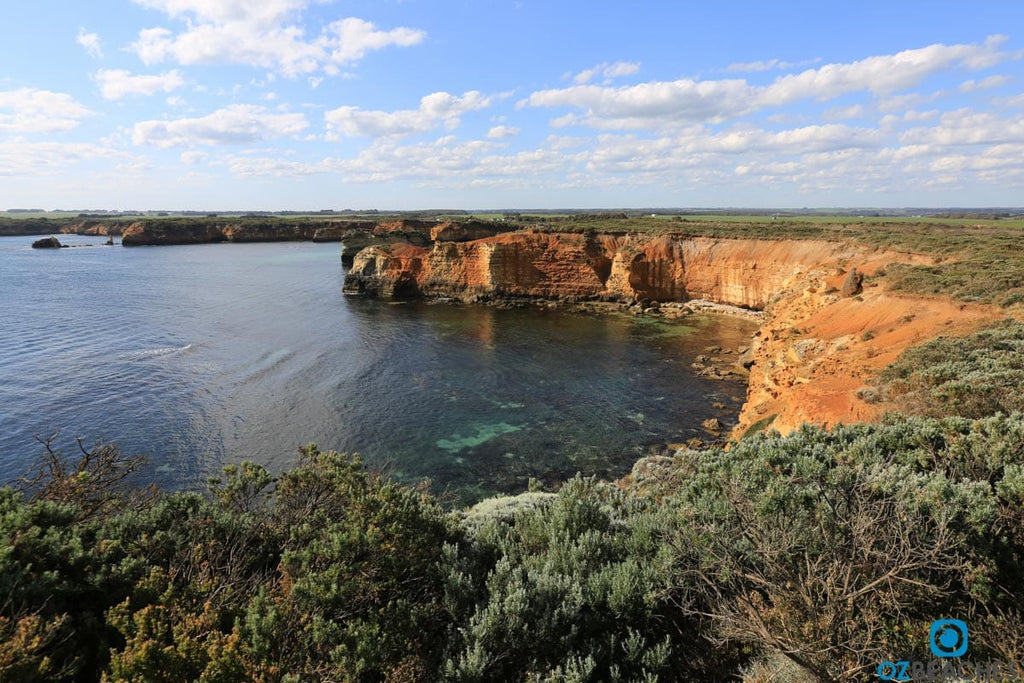
Amazing views a plenty along the Great Ocean Road
Apart from the obvious practicality of having a road along the coast, the Great Ocean Road was planned as a memorial to the Australian servicemen who gave their lives in WW1. It was also conceived as a way to help returned servicemen find their feet after the war, as well as alleviate the increasing social issues of drinking and fighting. By providing an income and focus, it gave them a sense of purpose and mission and helped to rebuild their lives and identities after the horrors of war.
The Great Ocean Road was built simply by hard work, guts and sheer determination. Construction was generally done by hand with picks and shovels, and with the help of small machines and explosives the workers advanced at a rate of around 3km per month carving out the road. In some sections workers would abseil down sheer cliff faces and literally hand-carve out a road from the rocks, and it's no surprise that many people died in the construciton of the road.

Amazing rock formations at The Grotto
The workers were paid 10 shillings and sixpence for hard eight hour days, and food was reported to cost around 10 shillings a week. But the soldiers working on the road made the most of things and had access to communal facilities such as dining marquees, tents, newspapers, games, pianos and other activities.
There have been reports of a two week drinking binge amongst the workers when a steamboat, the Casino, ran aground near Cape Patton, forcing it to abandon 500 barrels of beer and 120 cases of spirits.
According to the National Parks Service, the coastal area along the Great Ocean Road used to thrive with Drooping She Oak trees before European settlement. Due to fires and clearing by the early settlers to encourage suitable grazing plants, the She Oaks have been largely replaced with smaller Tea-trees and Coast Beard-Heath.

Why not walk the Great Ocean Road instead?
If you've got a few days up your sleeve, the Great Ocean Walk is a terrific way to take in the rugged and awe-inspiring southern coastline. Opened in 2004 and stretching 100km from Apollo Bay in the west to the 12 Apostles in the east, the walk takes you on a journey that awakens the senses and will leave a lasting imprint on your memory for life. Along the way you'll encounter hidden beaches, quaint seaside villages, unbelievable vistas, eucalypt forests, shipwrecks, gullies, farmlands and a multitude of species of flora and fauna. Ryan's Den campsite is a popular place to camp for a night, and the ruggedness and feeling of isolation you'll experience increases the closer you walk towards the 12 Apostles. Definitely worth doing if you're in the area and time's on your side.
By far the most popular spot to stop on the Great Ocean Road, the Twelve Apostles attracts millions of people from around the world and Australia each year.
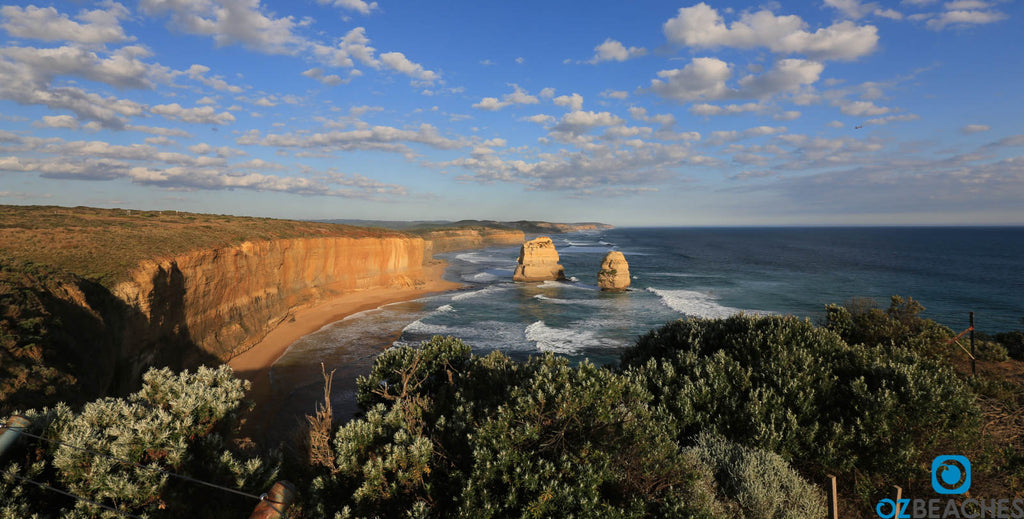
Looking east from the main lookout at The Twelve Apostles
The Twelve Apostles is a more recent naming of the limestone stacks – last century they were referred to as the ‘Sow and Piglets’. Nearby Muttonbird Island (near Loch Ard Gorge) was known as the ‘Sow’, and the smaller stacks the ‘Piglets’.
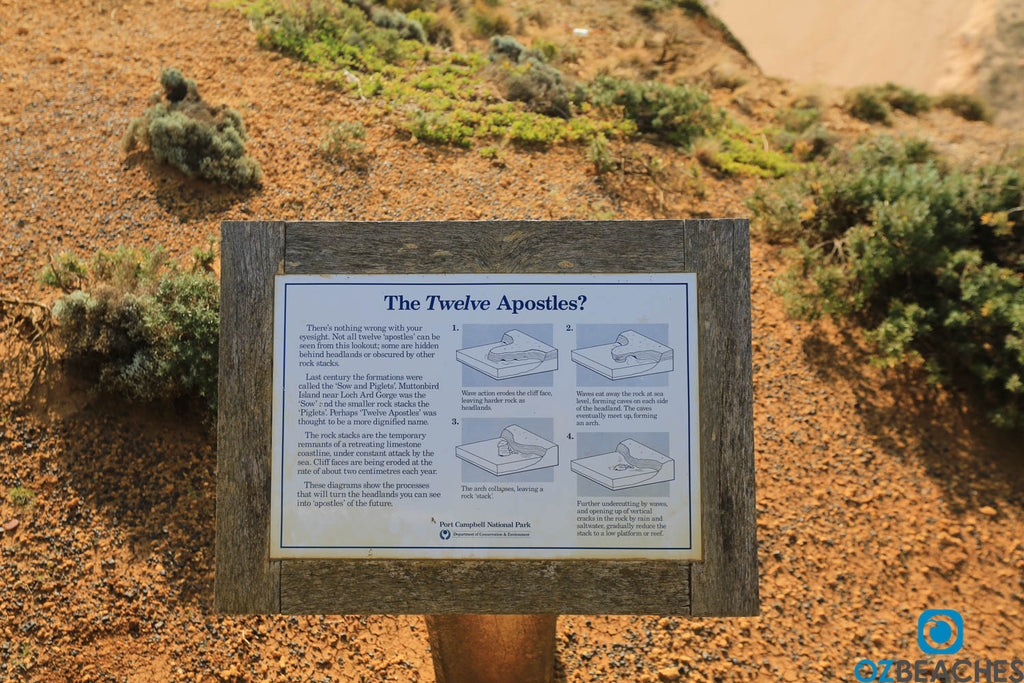
How The Twelve Apostles were made
The rock stacks are the remnants of a slowly retreating Limestone coastline that is under constant attack from the southern ocean and the cliff faces erode at a rate of around 2cm each year.
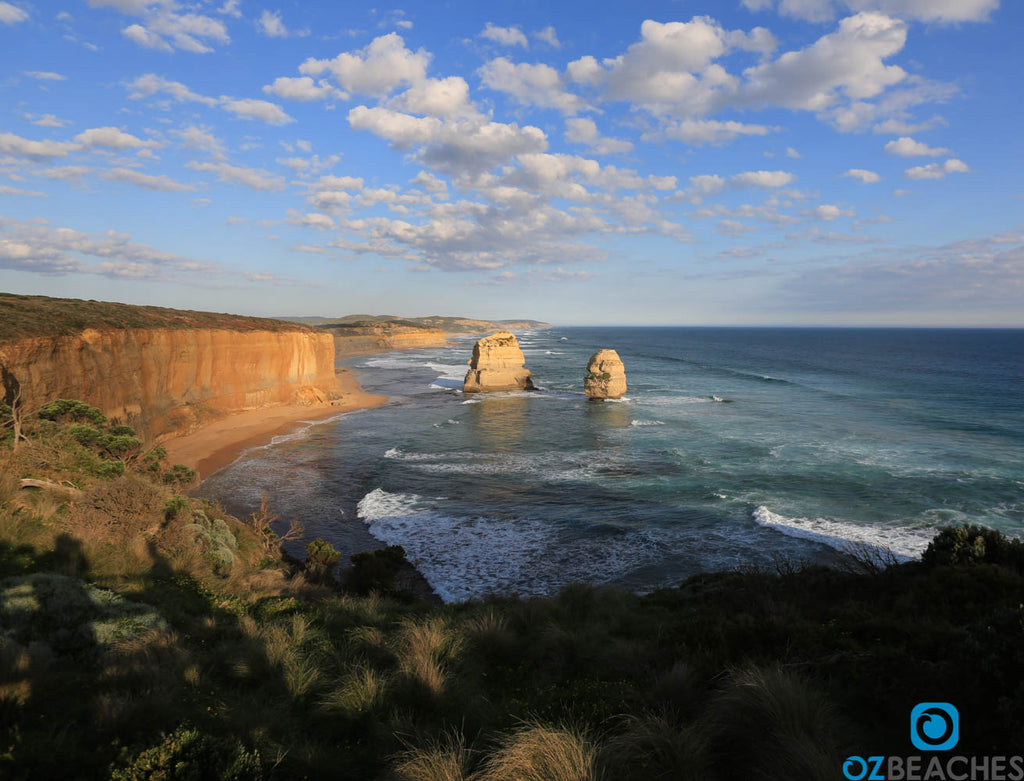
You could literally stand here and look for hours
The limestone is said to provide fertile ground for wine production and this is evident by the number of wineries you pass on the Great Ocean Road. There are currently only 8 apostles left standing, the ninth stack collapsed in 2005 and will surely not be the last.
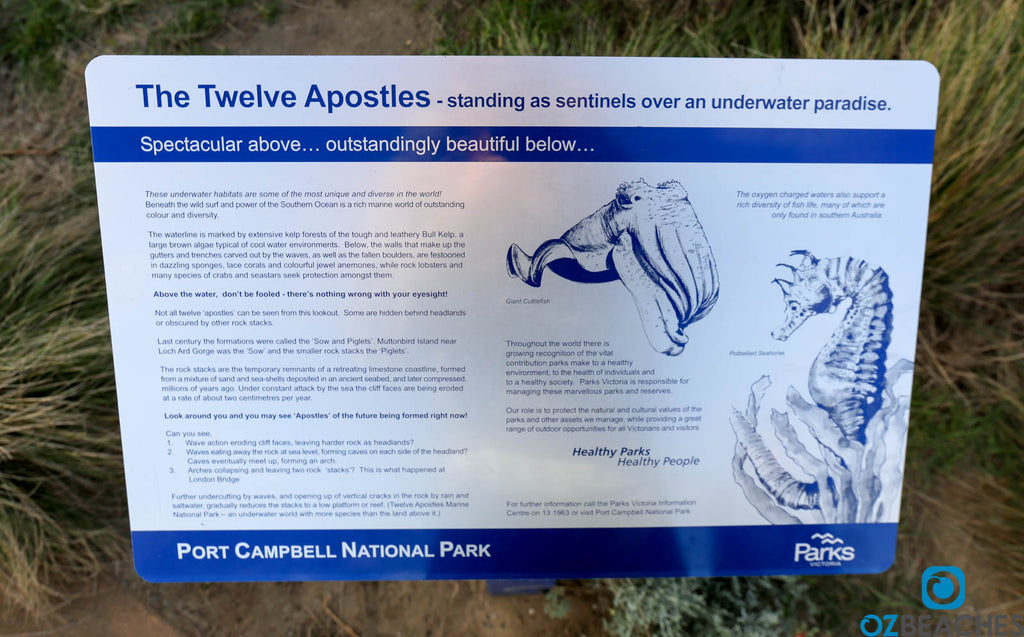
What lies beneath....home to a variety of sealife and creatures
The Twelve Apostles also create unique and rich underwater habitats and beneath the surface lies a vibrant marine world of outstanding colour and diversity. The waterline is marked with extensive Bull Kelp forests, the walls and carved gutters and trenches are home to sponges, lace corals and colourful jewel anemones, and rock lobsters and a multitude of species of crabs and starfish seek protection in their nooks and crannies.
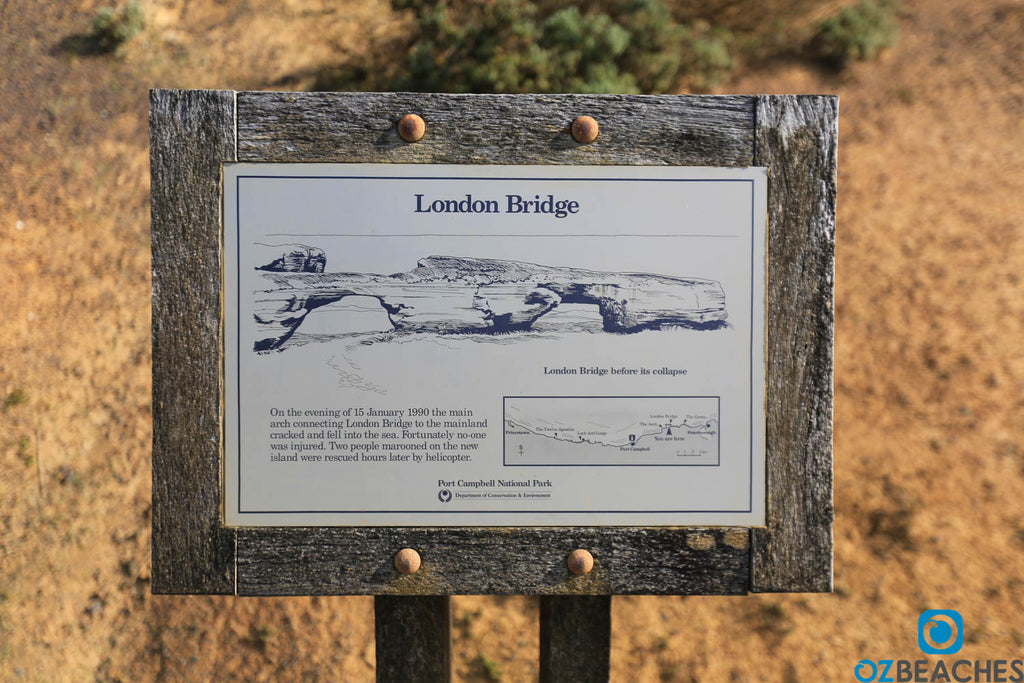
How London Bridge became London Arch
Standing strong in the face of adversity for so long, London Bridge was a uniquely shaped archway that collapsed into the sea on the 15th January 1990. Two people who had actually walked onto London Bridge before it collapsed luckily escaped and were stranded on Australia’s newest island for a few hours until a helicopter rescued them.
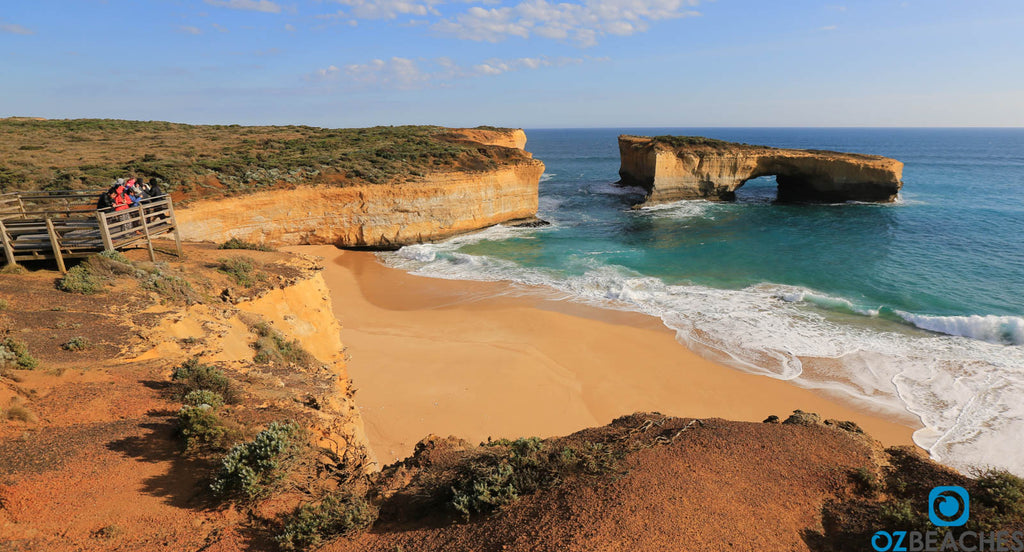
Imagine all that rock lying below the sea now
Part of the Bay of Islands Coastal Park, this 33km section of the Great Ocean road provides an abundance of plants, animals, heathland, walks and some of the best scenery along the entire stretch of coastline.

If you like walking this place is for you
There are a couple of relatively easy walks you can do near the Bay of Martyrs, one that takes you out to the point and another that heads down to the beach:
1, Halladale Point track – takes around half an hour on the way out to the point you can learn about the Halladale shipwreck, find out why plants struggle to survive here, and gain an insight into the local Kirrae-Whurrong peoples' history. If you’re really lucky you might even catch a glimpse of the endangered Rufous Bristlebird, although they are heard far more often than they are seen.
2, Simply follow the steps down to the beach and explore at your own leisure. Keep an eye out for rare Hooded Plovers, but don’t disturb them as their conservation status is currently listed as vulnerable in Victoria.

Looking down into The Grotto, even more amazing up close

The track is wheelchair friendly to a point before the stairs
One of the best rock formations along the Great Ocean Road, The Grotto is a naturally carved, circular looking formation that’s not quite a cave, blowhole or arch, but something of its own creation.
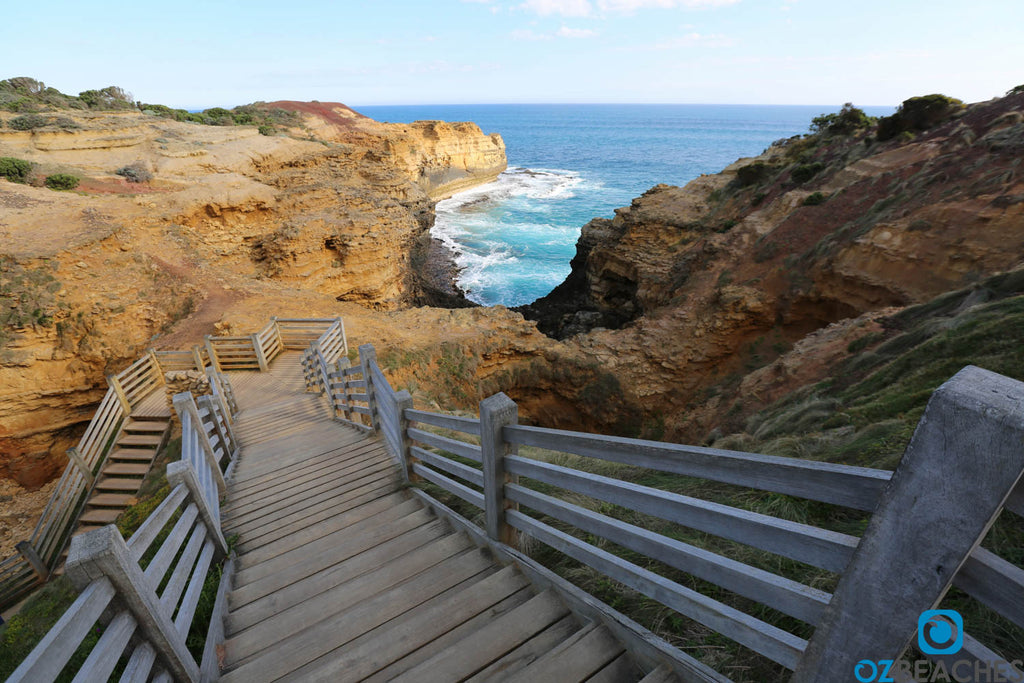
Even the stairs here are mesmerising - The Grotto
Located about halfway from sea level up the cliff, it can be found an easy 700m stroll from the carpark. There's also a viewing platform suitable for people with limited mobility. From the viewing platform you can follow a stairway down into the Grotto formation itself.

Close-up of The Grotto, ever-changing colours

One of many beautiful arches along the Great Ocean Road
Not as spectacular as some of the other rock formations along the Great Ocean Road but definitely worth a visit if not just for the walk down the staircase. Watch as waves pummel the cliffs below and cascade back down the rocks afterwards.

How inviting does that water look!

Bay of Islands Coastal Park is another popular place to stop
The Bay of Islands Coastal Park is around 32km long and provides numerous vantage points to take in the dramatic limestone cliffs and scenery along the Great Ocean Road. The area is situated between Peterborough and Warrnambool, and the lighter coloured limestone found here reflects light in a slightly different way, providing great photo opportunities in low light and cloudy conditions.
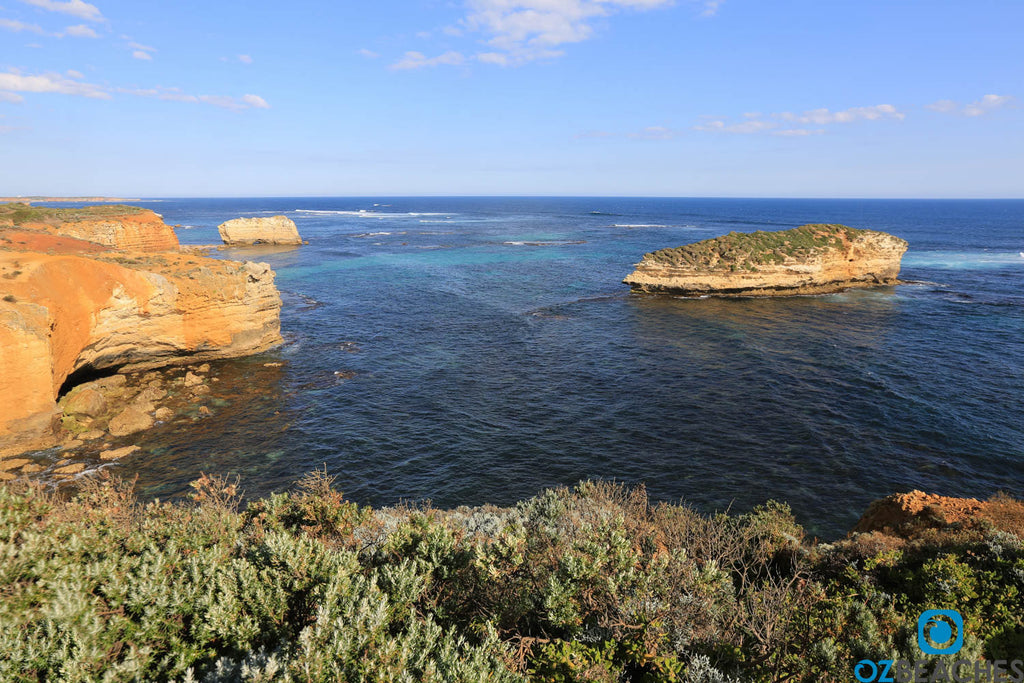
One of the many places to stop and take it all in
The main lookouts along this coast can be found at Childers Cove, Three Mile Beach, Bay of Martyrs and two at the Bay of Islands themselves.
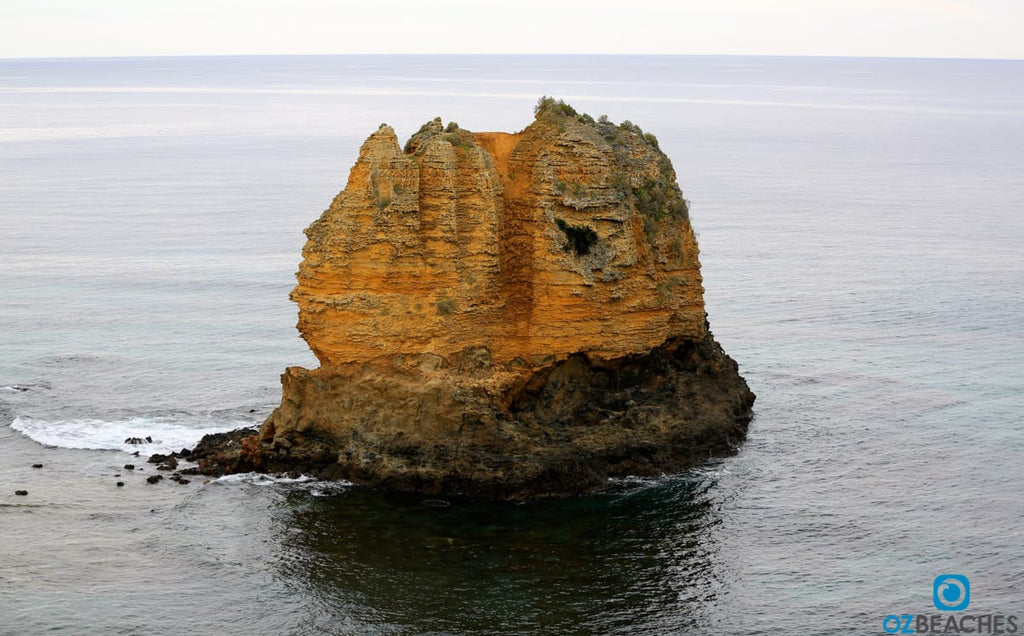
Looks more Thailand to me than Victoria - Eagle Rock at Aireys Inlet
Fairhaven Beach at Aireys Inlet is popular with surfers and those wanting a stop-off along the Great Ocean Road to relax and unwind. Another attraction in the area, the Split Point Lighthouse, gives great panoramic views of the coastline and was also the setting of a popular children's television show 'Around the Twist' which featured in the late 1990s and early 2000s.
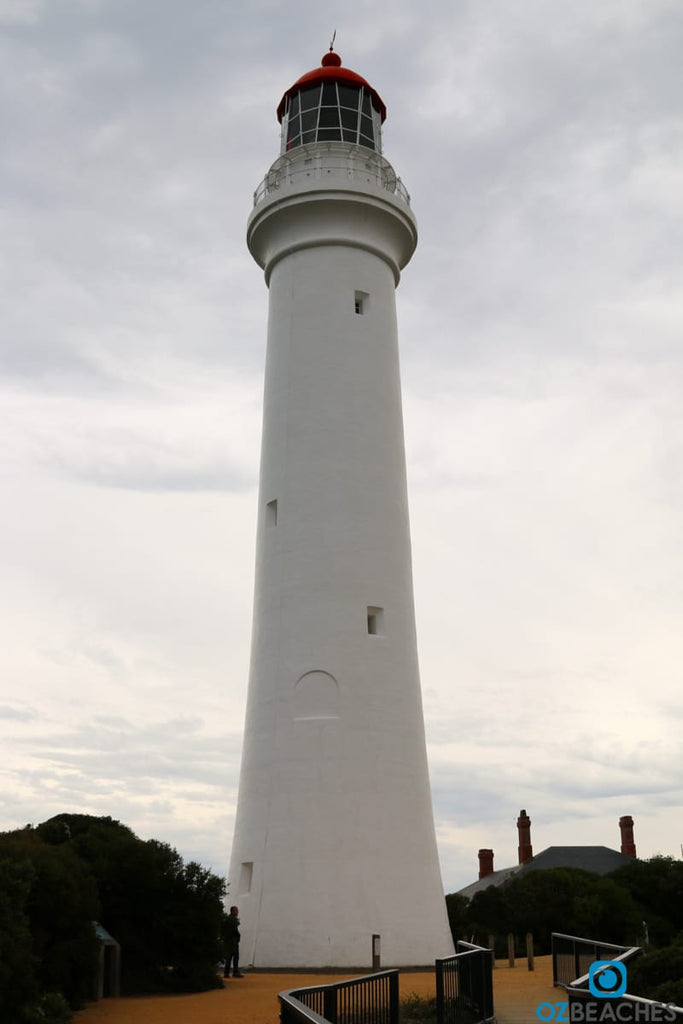
"Have you ever...ever felt like this...have strange things happened, are you going, 'round the twist". Split Point Lighthouse.
I hope you enjoyed reading this article as much as I enjoyed writing it. The Great Ocean Road is one of the best coastal drives anywhere in the world and definitely one to put on your list if you ever visit Australia. There's such a variety of things to see and do along the 243km stretch of coastline that it has something for everyone from the keenest of surfers to those wanting to sit peacfully and take in the amazing views. You can drive the entire stretch in a day, however if you have more time up your sleeve you could easily spend a week exploring the little nooks and crannies along the way to truly immerse yourself in the area and experience all it has to offer.
All photos in this article are available for purchase in various sizes as high resolution acrylic glass or canvas prints, and are available for licensing purposes for media and marketing/promotional material. The photos you see here have been compressed for optimal online user experience, which means we've intentionally reduced the file size and quality of each image to ensure the pages you visit load faster.
Any printed reproduction of the photos you see on OZBEACHES would be done using the original 20+ megabyte RAW files, with the additional layer of having a professional graphic designer personally inspect each image and optimise for print. The OZBEACHES watermark would be removed and would not be visible on your print. If you have any questions about this process, please email me (Adam) and let me know which photo you're interested in by quoting the caption beneath it. Alternatively you can check out our featured images in the print gallery.
If you think The Great Ocean Road is a place you'd like to visit with your friends, why not share this article with them via one of the social links below. I want to help people (including you!) find their dream Australian beach, and the more information we share together will ultimately help us all in achieving that goal. I hope you enjoy your search.
Cheers,
Adam